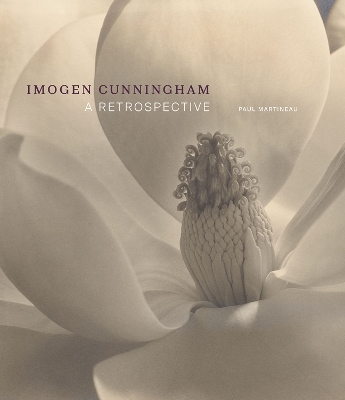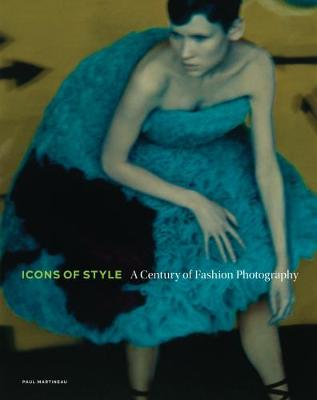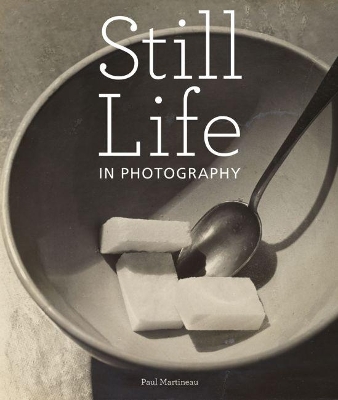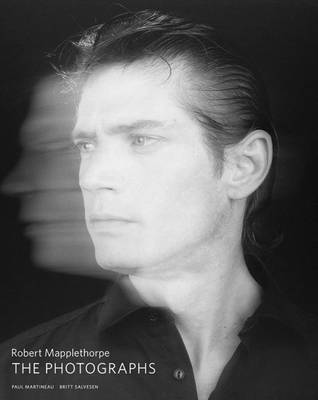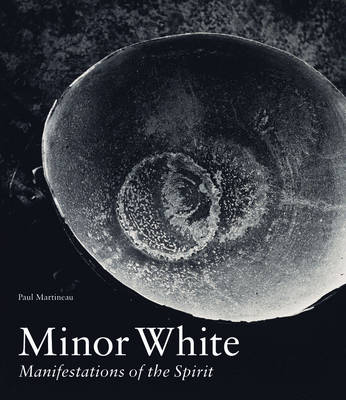BIBLIOTHECA PAEDIATRICA REF KARGER
7 total works
Thoroughly researched and beautifully produced, this catalogue complements the first comprehensive retrospective in the United States of Imogen Cunningham's work in over thirty-five years. Celebrated American artist Imogen Cunningham (1883-1976) enjoyed a long career as a photographer, creating a large and diverse body of work that underscored her unique vision, versatility, and commitment to the medium. An early feminist and inspiration to future generations, Cunningham intensely engaged with Pictorialism and Modernism; genres of portraiture, landscape, the nude, still life, and street photography; and themes such as flora, dancers and music, hands, and the elderly.
Organized chronologically, this volume explores the full range of the artist's life and career. It contains nearly two hundred color images of Cunningham's elegant, poignant, and groundbreaking photographs, both renowned and lesser known, including several that have not been published previously. Essays draw on primary sources at the Imogen Cunningham Trust, the Cunningham papers at the Archives of American Art, and contributing author Susan Ehrens's personal interviews with the artist's associates, incorporating a selection of letters, family albums, and other intimate materials to enrich readers' understanding of Cunningham's motivations and work.
This volume is published to accompany an exhibition on view at the J. Paul Getty Museum at the Getty Center September 15, 2020, to January 10, 2021 and at the Seattle Art Museum, February 11 to May 23, 2021.
Organized chronologically, this volume explores the full range of the artist's life and career. It contains nearly two hundred color images of Cunningham's elegant, poignant, and groundbreaking photographs, both renowned and lesser known, including several that have not been published previously. Essays draw on primary sources at the Imogen Cunningham Trust, the Cunningham papers at the Archives of American Art, and contributing author Susan Ehrens's personal interviews with the artist's associates, incorporating a selection of letters, family albums, and other intimate materials to enrich readers' understanding of Cunningham's motivations and work.
This volume is published to accompany an exhibition on view at the J. Paul Getty Museum at the Getty Center September 15, 2020, to January 10, 2021 and at the Seattle Art Museum, February 11 to May 23, 2021.
In 1911 the French couturier Paul Poiret challenged Edward Steichen to create the first artistic, rather than merely documentary, fashion photographs, a moment that is now considered to be a turning point in the history of fashion photography. As fashion changed over the next century, so did the photography of fashion. Steichen's modernist approach was forthright and visually arresting. In the 1930s the photographer Martin Munkacsi pioneered a gritty, photojournalistic style. In the 1960s Richard Avedon encouraged his models to express their personalities by smiling and laughing, which had often been discouraged previously. Helmut Newton brought an explosion of sexuality into fashion images and turned the tables on traditional gender stereotypes in the 1970s, and in the 1980s Bruce Weber and Herb Ritts made male sexuality an important part of fashion photography. Today, following the integration of digital technology, teams like Inez & Vinoodh and Mert & Marcus are reshaping our notion of what is acceptable-not just aesthetically but technically and conceptually-in a fashion photograph. From glossy pages in Vogue and Harper's Bazaar to framed prints on museum walls, fashion photography encompasses both commercial advertising and fine art.
This survey of one hundred years of fashion photography updates and reevaluates this history in five chronological chapters by experts in photography and fashion history. It includes more than three hundred photographs by the genre's most famous practitioners as well as important but lesser-known figures, alongside a selection of costumes, fashion illustrations, magazine covers, and advertisements.
This survey of one hundred years of fashion photography updates and reevaluates this history in five chronological chapters by experts in photography and fashion history. It includes more than three hundred photographs by the genre's most famous practitioners as well as important but lesser-known figures, alongside a selection of costumes, fashion illustrations, magazine covers, and advertisements.
Still life is one of the great art forms. The first still life photograph was created around 1827, more than a decade before the news of photography's invention was announced in Paris and London in 1839. There is a resurgence of interest in the still life genre as the digital age transforms the medium. A sumptuous visual and narrative survey of the innovative ways in which photographers throughout the eras have explored the traditional genre of still life. An introductory essay is followed by an illuminating sequence and juxtaposition of plates showing how still life has served as both a conventional and an experimental form during periods of significant aesthetic and technological change. Illustrating the above are 19thC masterpieces by practitioners such as Hippolyte Bayard and Roger Fenton, 20thC examples from Irving Penn and Edward Weston, and a sampling of contemporary artists, some recalling styles from the past.
A fascinating look at one of photography's most controversial and beloved iconsThe legacy of Robert Mapplethorpe (1946-1989) is rich and complicated, triggering controversy, polarizing critics, and providing inspiration for many artists who followed him. One of the most influential figures of his time, today Mapplethorpe stands as an example to emerging photographers who continue to experiment with the boundaries of acceptability and concepts of the beautiful.Robert Mapplethorpe: The Photographs offers a timely and rewarding examination of his oeuvre and influence. Drawing from the extraordinary collection jointly acquired in 2011 by the J. Paul Getty Museum and the Los Angeles County Museum of Art from the Robert Mapplethorpe Foundation, as well as the Mapplethorpe Archive housed at the Getty Research Institute, the authors were given the unique opportunity to explore new resources and present fresh perspectives. The result is a fascinating introduction to Mapplethorpe's career and legacy, accompanied by a rich selection of illustrations covering the remarkable range of his photographic work.All of these beautifully integrated elements contribute to what promises to become an essential point of access to Mapplethorpe's work and practice.
This publication is issued on the occasion of the exhibition Robert Mapplethorpe: The Perfect Medium on view at both the J. Paul Getty Museum and at the Los Angeles County Museum of Art from March 15 through July 31, 2016; at the Musee des Beaux-Arts de Montreal from September 9, 2016, through January 7, 2017; and at the Art Gallery of New South Wales, Sydney, from October 2017 through February 2018.
This publication is issued on the occasion of the exhibition Robert Mapplethorpe: The Perfect Medium on view at both the J. Paul Getty Museum and at the Los Angeles County Museum of Art from March 15 through July 31, 2016; at the Musee des Beaux-Arts de Montreal from September 9, 2016, through January 7, 2017; and at the Art Gallery of New South Wales, Sydney, from October 2017 through February 2018.
This is a beautifully illustrated tribute to one of the most influential photographers of the twentieth-century. Controversial, misunderstood, and sometimes overlooked, Minor White (1908-1976) is one of the great photographers of the 20th-century, whose ideas exerted a powerful influence on a generation of photographers and still resonate today. His photographic career began in 1938 in Portland, Oregon, with assignments for the WPA (Works Progress Administration). After serving in World War II and studying art history at Columbia University, White's focus shifted toward the metaphorical. He began creating images charged with symbolism and a critical aspect called equivalency, referring to the invisible spiritual energy present in a photograph made visible to the viewer. This book brings together White's key biographical information - his evolution as a photographer, teacher of photography, and editor of Aperture, as well as particularly insightful quotations from his journal, which he kept for more than forty years.
The result is an engaging narrative that weaves through the main threads of White's life, his growth as an artist, as well as his spiritual search and ongoing struggle with his own sexuality and self-doubt. He sought comfort in a variety of religious practices that influenced his continually metamorphosing artistic philosophy.
The result is an engaging narrative that weaves through the main threads of White's life, his growth as an artist, as well as his spiritual search and ongoing struggle with his own sexuality and self-doubt. He sought comfort in a variety of religious practices that influenced his continually metamorphosing artistic philosophy.
This is a stunning collection of photographs - many never before published - celebrating the remarkable talent of Herb Ritts. "Herb Ritts" traces the life and career of the iconic photographer through a compelling selection of both renowned and previously unpublished, photographs and two insightful essays. Herb Ritts (1952-2002) was a Los Angeles-based photographer who established an international reputation for distinctive images of fashion models, nudes, and celebrity portraits. During the 1980s and 1990s, Ritts was sought out by leading fashion designers such as Armani, Gianfranco Ferre, Donna Karan, Calvin Klein, Valentino, and Versace, as well as magazine editors from "GQ", "Rolling Stone", and "Vanity Fair", among others, to lend glamour to their products and layouts. Largely self-taught, Ritts developed his own style, one that often made use of the California light and landscape and helped to separate his work from his New York-based peers.
From the late 1970s until his untimely death from AIDS in 2002, Ritts' ability to create photographs that successfully bridged the gap between art and commerce was not only a testament to the power of his imagination and technical skill, but also marked the synergistic union between art, popular culture, and business that followed in the wake of the Pop Art movement of the 1960s and 1970s.
From the late 1970s until his untimely death from AIDS in 2002, Ritts' ability to create photographs that successfully bridged the gap between art and commerce was not only a testament to the power of his imagination and technical skill, but also marked the synergistic union between art, popular culture, and business that followed in the wake of the Pop Art movement of the 1960s and 1970s.
It is a beautifully illustrated celebration of the images of Eliot Porter, and their role in the origins of the environmental conservation. Known for his exquisite images of birds and landscape, Eliot Porter (1901-1990) was a pioneer in the use of colour photography. His work also became a powerful visual argument for environmental conservation. Possessing a gift for close observation, Porter explored new ways of depicting nature, building blinds in trees so he could study his avian subjects at closer vantage, and producing landscape images that capture both pristine forest and ragged river canyons with equal force and brilliance. Initially encouraged by the ground-breaking photographers Ansel Adams and Alfred Stieglitz, Porter went on to produce a body of work all his own. His 1962 Sierra Club book "In Wildness Is the Preservation of the World" transformed the concept of nature photography books. Ultimately, Porter's photographs came to the attention of Congress and led to the passage of the Wilderness Act of 1964, the foundational law in wilderness management today.
